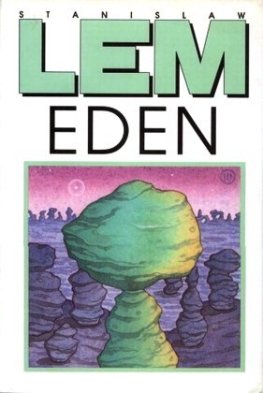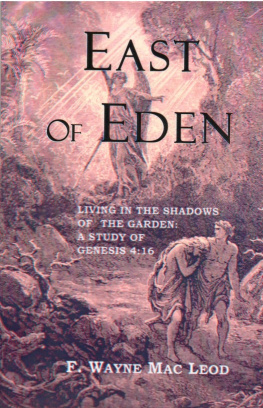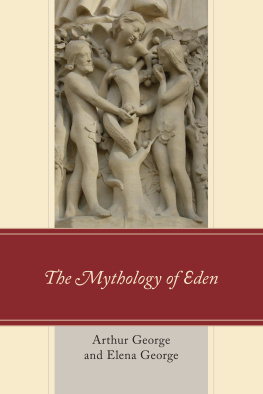Copyright 2020 by Jeffrey L. Gross
______________________________________________________________
All rights reserved. This book or any portion thereof may not be reproduced or transmitted in any form or manner, electronic or mechanical, including photocopying, recording, or by any information storage or retrieval system, without the express written permission of the copyright owner except for the use of brief quotations in a book review or other noncommercial uses permitted by copyright law.
______________________________________________________________
Created in the United States of America
Library of Congress Control Number:2020901597
ISBN:Softcover 978-1-64376-810-6
eBook978-1-64376-809-0
Republished by: PageTurner, Press and Media LLC
Publication Date: 06/11/2020
______________________________________________________________
To order copies of this book, contact:
PageTurner, Press and Media
Phone: 1-888-447-9651
order@pageturner.us
www.pageturner.us
Contents
THE ARCHAEOLOGICAL SITES OF WAIPIO VALLEY: THE LAST
POLYNESIAN GARDEN OF EDEN368
Waipio Valley
Photograph by Kirk Lee Aeder
The Valley of Wai-pio may justly be termed the Eden of the Hawaiian Islands. Long before I saw it, I had heard it frequently spoken of in terms of the warmest admiration. On reaching the brink of the tremendous bank by which its southern limit was bounded, the scene was truly magnificent. The bed of the valley reposed at the depth of two thousand feet below... the dwellings of the natives dwindled away nearly to the size of ant hills. On the opposite bank... much higher than the one which I stood... glittering cascades were tumbling from rock to rock... the center of the valley was enlivened with two crystal rivers, winding... to meet the foaming surge that broke on the fair sand-beach at its mouth. There was something about that valley so lovely and undisturbed, that it pictured to the imagination the paradise in which the first man wandered with the first woman. It seemed to belong to another world or to be a portion of this into which sorrow and death had never entered... my explorations in this valley convinced me that it once teemed with a large and busy population. The boundaries of ancient fishponds, taro-beds, and village sites were very numerous. At different periods in its history there was not a single square rod which does not seem to have been well cultivated... The population is rapidly decreasing, in fact it is nearly extinct... this terrestrial paradise will be as desolate and forsaken as was Eden of old after the expulsion of its first tenants.
(From S and wic h Isl an d N ot e s b y a H a ol e , 1854, by George W. Bates)
The Valley of Waipio from the Sand Hills on the Beach
An etching by J. Archer from a drawing by Reverend William Ellis in the Journal of William Ellis: A Narrative of a Tour through Hawaii or Owhyhee in 1823 . The first foreigner to visit the royal sites of Waipio Valley, Ellis spent the morning making a drawing of the valley from the sand hills on the beach. In the foreground, located directly behind the ancient sand dune burial mounds at the mouth of Waipio Valley are shown Ka Haunokamaahala, the royal residence, and the Pakaalana Heiau with Hale o Liloa, the royal mausoleum, within its walls. Inland on the flat valley floor are taro pondfields, fishponds and the Wailoa River wandering across the valley floor emptying into Waipio Bay. Houses and agricultural fields are located below the cliffs on either side of the valley and the 1450 foot-high double Hiilaw e Waterfall along with the villages of Napoopoo and Koauka can be seen in the distance
PREFACE
On my wedding anniversary in January 2005, my wife and I stayed at a hotel along the Northern California Coast where we met an African musician from Timbuktu, Mali, West Africa. After my wife explained we had recently visited the Hawaiian Islands and that I had previously lived there in the late 1970s and early 1980s, he suggested I had unfinished business in the islands and should return, which my wife and I did in August 2005. That a book about Polynesia was the unfinished business never occurred to me. W aip i o V a l l e y : A P o l y n e s i a n J o u r n e y f r o m Ed e n t o Ed e n recounts the sea voyages of the ancestors of the Polynesians across a third of the circumference of the earth; many in double-hull canoes built with Stone Age technology, perhaps the most remarkable migrations in human history. From the land of Sumer, Mesopotamia, the location of Kalana i Hauola, the Hawaiian name for the biblical Garden of Eden, to ancient Egypt, the Indus River Valley of ancient India, through Island Southeast Asia and into the Pacific Ocean, the Proto-Polynesians resided in various Gardens of Eden along their journey to Waipio Valley on the island of Hawaii of the Hawaiian Islands, the last Polynesian Garden of Eden.
Included in the book are geological explanations for the formation of the Hawaiian Islands and the unique Waipio Valley that was a royal and religious center of great cultural and spiritual importance, home of the gods in mythological legends, entrance into the spirit world of the afterlife and historic home of ancient Hawaiian chiefs and their sacred temples or hei a u . The ancient Polynesians lived in some of the most remote environments on earth where they were isolated for over 2000 years, yet they have complex societies indicating extensive interaction with ancient civilizations. Their cultural and religious beliefs contain elements from mankinds distant past nearer the beginning of human history.
Readying Canoes for a Voyage
A painting by Herb Kawainui Kane
Copyright; National Geographic Society
They sailed in double-hull canoes built with Stone Age technology using tools of stone, bone, and shell. Canoe hulls were carved from tree logs, connected with crossbeams and a platform or pola lashed together with sennit or coconut fiber cords. Built on the platform was a movable structure or hale lanalana for long distance voyages and sails were made from woven pandanus leaves. Voyaging from the Marquesas Islands in Eastern Polynesia possibly as early as 25 BC to AD 125, they sailed north for more than 2000 miles through an unknown sea navigating by the stars of the night sky
Eia Hawaii! (Behold Hawaii!)
Sighting Mauna Kea
A painting by Herb Kawainui Kane
Courtesy of Herbert K. Kane, LLC
Finally, after a month at sea a cloudbank appeared on the horizon with a mountain visible above the clouds. It was an island larger than they had ever seen. The gods delivered the Marquesas Islanders to a new home in the middle of the largest ocean on earth and when they landed the human history of the Hawaiian Islands began
INTRODUCTION TO VOLUME 2
V olume 1, Chapter s through , traced the epic migration routes and timeline of Proto-Polynesians from the steppes of Central Asia to the Black Sea and city-state of Aratta in Eastern Turkey. Proto-Polynesians migrated down the Euphrates River to the land of Sumer, Mesopotamia, along the shore of the Persian Gulf, location of Kahiki, land of the gods, the biblical Garden of Eden and the Hawaiian Flood of Nuu or the biblical Flood of Noah. Proto-Polynesians migrated across the Indian Ocean to the Indus River Valley of ancient Vedic India, around the Arabian Peninsula and up the Red Sea to the land of Egypt. After the biblical Flood, some Proto-Polynesians migrated inland up the Tigris/Euphrates River Valley then south eventually reaching the land of Canaan and Lower Egypt. Proto-Polynesians migrated to the islands of Sumatra and Java and through the Wallacea area of Island Southeast Asia establishing homelands in the Moluccas Islands and on the island of Gilolo or Halmahera. Proto-Polynesians sailed through the Makassar Strait settling on the northern outer islands of Melanesia along with Lapita settlers who originated from the Indus River Valley of ancient India. The Proto-Polynesian ariki reached Fiji, Tonga and Samoa, the islands of Western Polynesia, by migrating across the low islands and atolls of Micronesia. Polynesians voyaged north from the Marquesas Islands in double-hull canoes reaching Hawaii Island, land of raging fire, and the lush Waipio Valley. Later, Tahitians arrived in the Hawaiian Islands migrating from the sacred Taputapuatea Marae on Raiatea Island an d established themselves as the ruling elite who remade Hawaiian society. Waipio Valley became a royal residence of the high alii chiefs of Hawaii Island until Umi, the first to unite Hawaii Island, moved his royal residence to Kailua-Kona on Hawaii Islands leeward side. Kamehameha the First, who spent his early years in the seclusion of Waipio Valley, eventually conquered the Hawaiian Islands. After 20 years of waging war Kamehameha returned to Kamakahonu, Kailua-Kona, where he died in 1819 and then Hawaiian society changed. The oppressive religious kapu system was abolished and the carved kii idols and feathered gods of Hawaiian heiau were destroyed in what has been described as the Hawaiian Cultural Revolution.
















